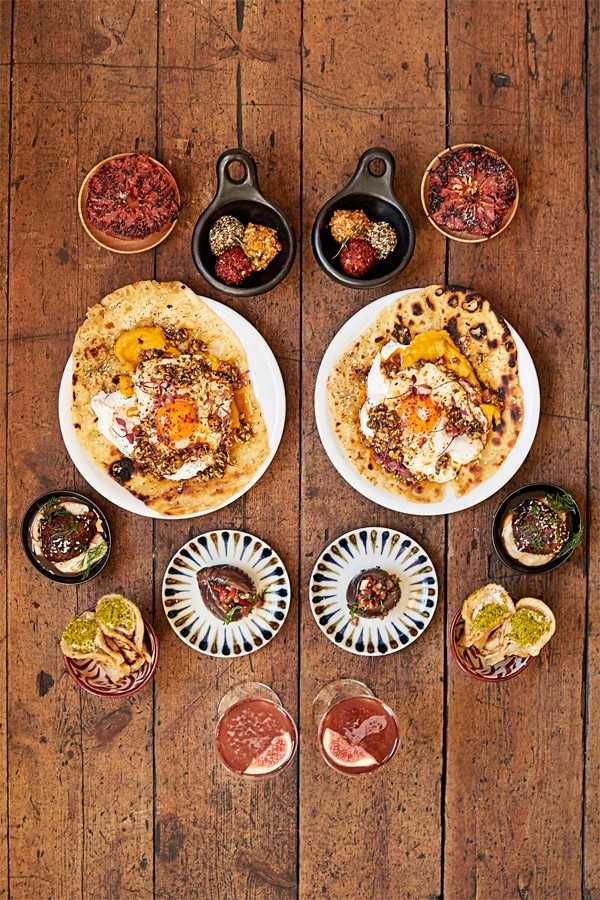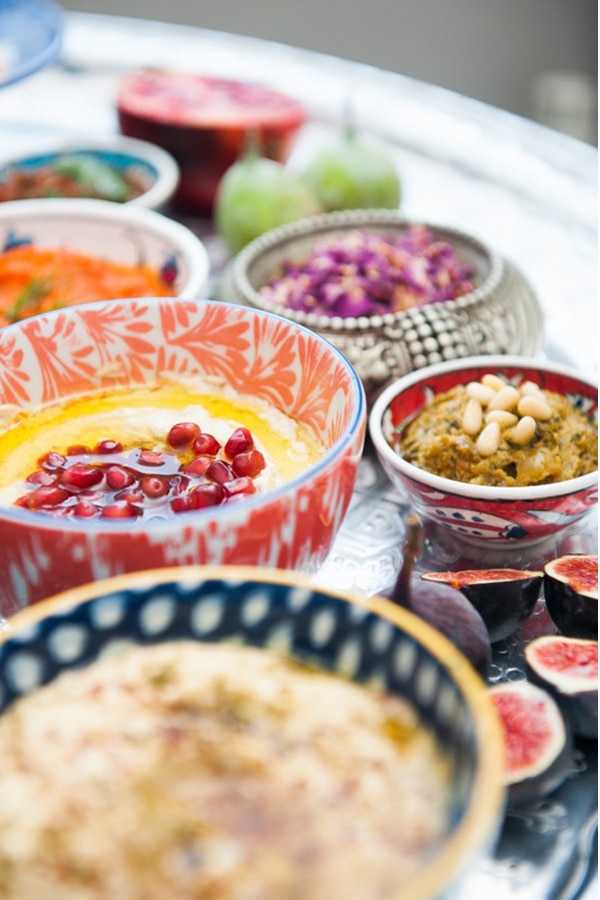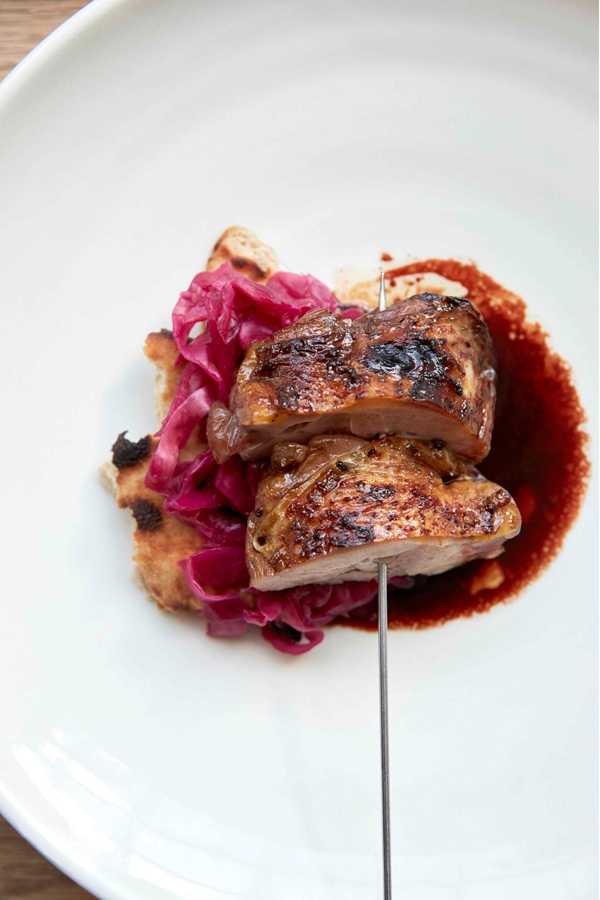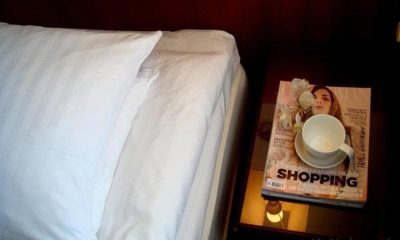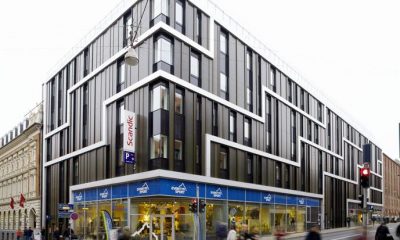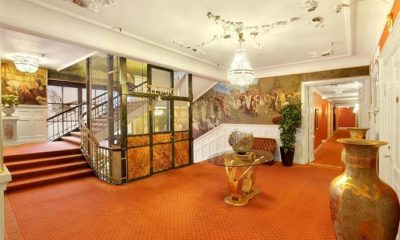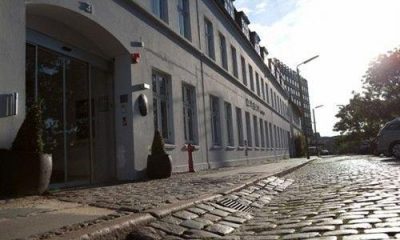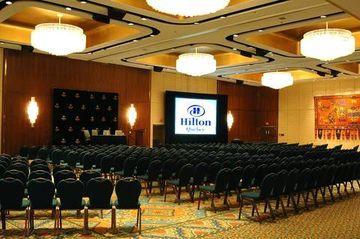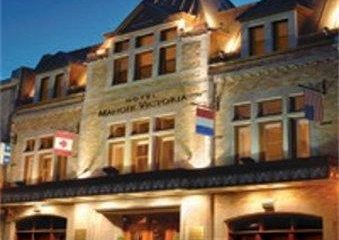Visit to London
Celebrating Syrian Culture and Cuisine with #CookForSyria
- /home/discountdealsonh/public_html/wp-content/plugins/mvp-social-buttons/mvp-social-buttons.php on line 27
https://www.discountdealsonhotels.com/wp-content/uploads/2017/08/cookforsyria_illustration_chantel-WP-975x650.jpg&description=Celebrating Syrian Culture and Cuisine with #CookForSyria', 'pinterestShare', 'width=750,height=350'); return false;" title="Pin This Post">
- Share
- Tweet /home/discountdealsonh/public_html/wp-content/plugins/mvp-social-buttons/mvp-social-buttons.php on line 69
https://www.discountdealsonhotels.com/wp-content/uploads/2017/08/cookforsyria_illustration_chantel-WP-975x650.jpg&description=Celebrating Syrian Culture and Cuisine with #CookForSyria', 'pinterestShare', 'width=750,height=350'); return false;" title="Pin This Post">
What are the flavors of Syria?
That’s exactly what chefs are discovering as part of the #CookForSyria campaign, an initiative to raise funds and awareness for UNICEF UK’s Children of Syria fund through the unifying power of food.
In an effort to preserve and celebrate Syrian culture while the region faces the largest humanitarian crisis of our time, London-based tastemakers Serena Guen (the founder of SUITCASE magazine and founding member of UNICEF’s Next Generation London), and Clerkwenwell Boy (a foodie and critic with the most appetizing Instagram), created the campaign as a single pop-up dinner, but it’s since taken off and evolved into a global movement. The project is also co-organized by Gemma Bell, the founder of one of London’s top PR firms.
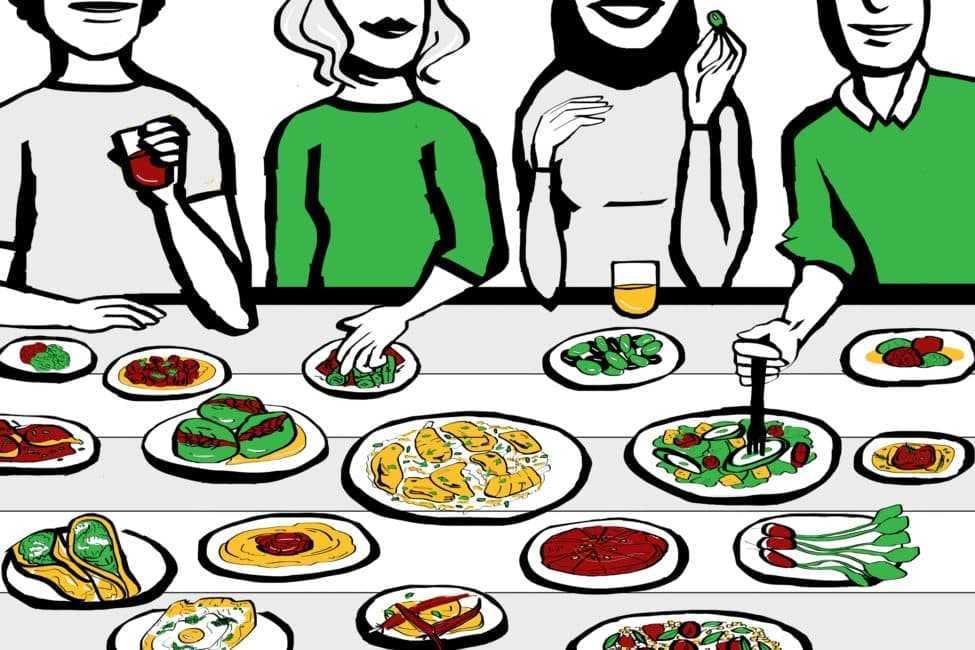
Expanding from London to Sydney and Melbourne, and soon to the US, #CookForSyria asks professional chefs to re-create their signature dishes with a Syrian twist, either to serve at their restaurant or during an event, or to donate to the #CookForSyria Recipe Book, with proceeds going to UNICEF’s Syrian relief fund—and there are plenty of more ways chefs, home cooks, and anyone else can contribute.
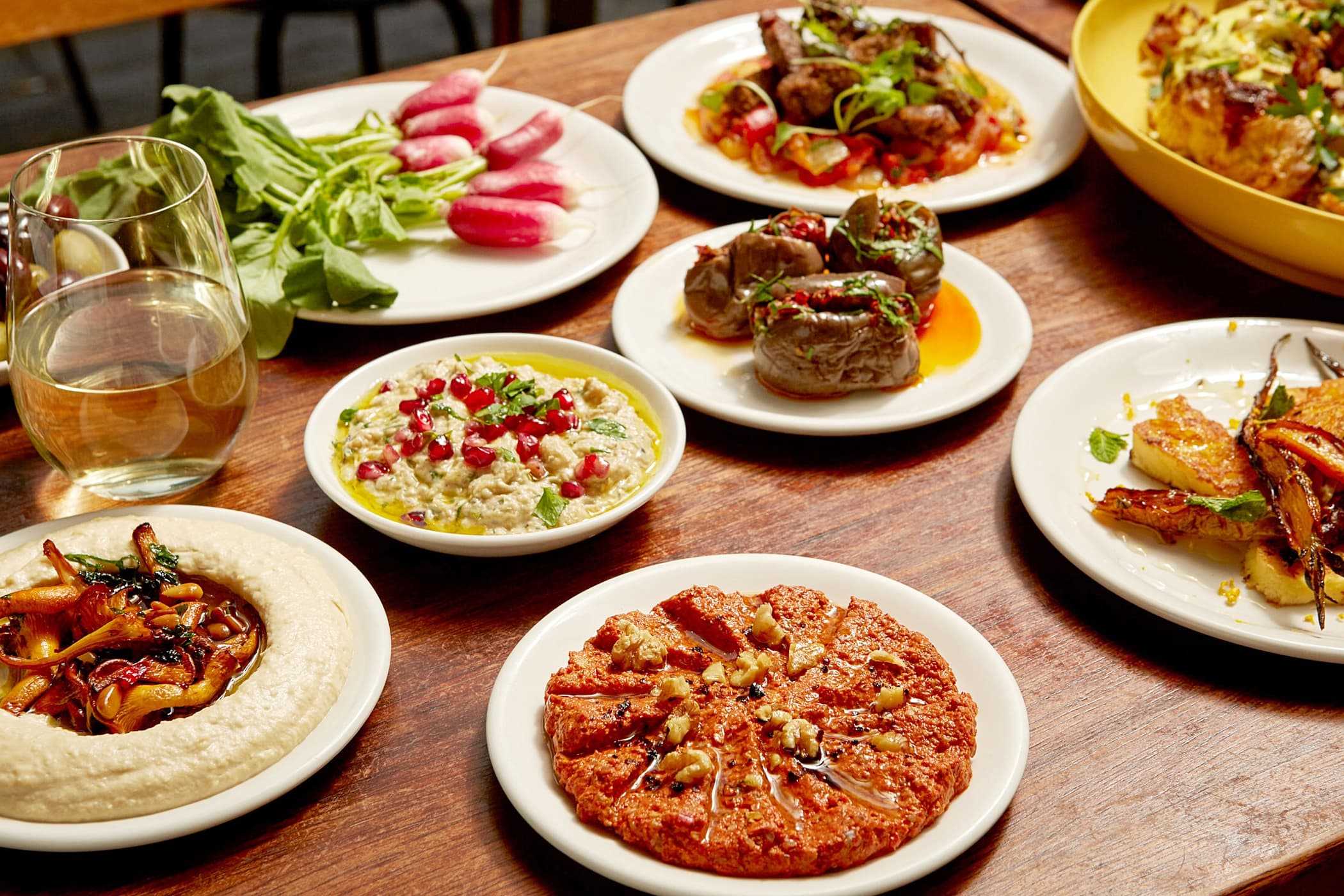
Here, Australian native turned London local Clerkenwell Boy talks the generosity of Syrian culture and cuisine, how #CookForSyria is catching on, and ways to get involved.
The Flavors of Syria
“Syrian cuisine obviously has a lot of Middle Eastern influences from the Levant region, so a lot fresh herbs, a lot of spices, Aleppo pepper, pistachios and pomegranate and labneh (a strained yogurt), chickpeas, and falafels and flatbread, sesames and hummus. Lots of lovely Moorish, delicious, fresh layers of flavors. Lots of slow cooking but also smoky [flavors]; lots of sharpness and freshness from pomegranate molasses and lemon, but also herbaceous notes from the za’atar and the spices as well. Really delicious, generous food. Syrian cuisine is really similar to Turkish cuisine but there are slight [differences], so instead of using lamb on a flatbread, you might use beef, and specific types of spices. There’re lots of interesting nuances.”

The Generosity, Kindness, and Resilience of Syrian Culture
“We met a lot of Syrian people along the way, including refugees who used to own restaurants and were trying to help fund their new restaurants now that they’re in London. We had a pop-up with one of the refugees that we met, and we had some 700 tickets that were fully pre-sold before the day he launched his event. There’s been a lot of people who have been embracing and learning about Syrian cuisine. People are learning more about Middle Eastern cuisine because it’s a really good way to hold on to a culture that is being devastated at the moment.
It’s all about generosity and sharing and supporting each other, the kindness, the history as well, the silk roads, the fact that it has lots of different influences. I think what’s really showing through is the resilience of the Syrian people, the fact they’ve been subject to really difficult circumstances in the last few years and when you meet them and think about the things that they must have gone through, and the fact that they’re still really hardworking, and really just trying to make a living…There are so many people out there who are there to support; it’s been amazing to see lots of different people from lots of different cultures coming together.”
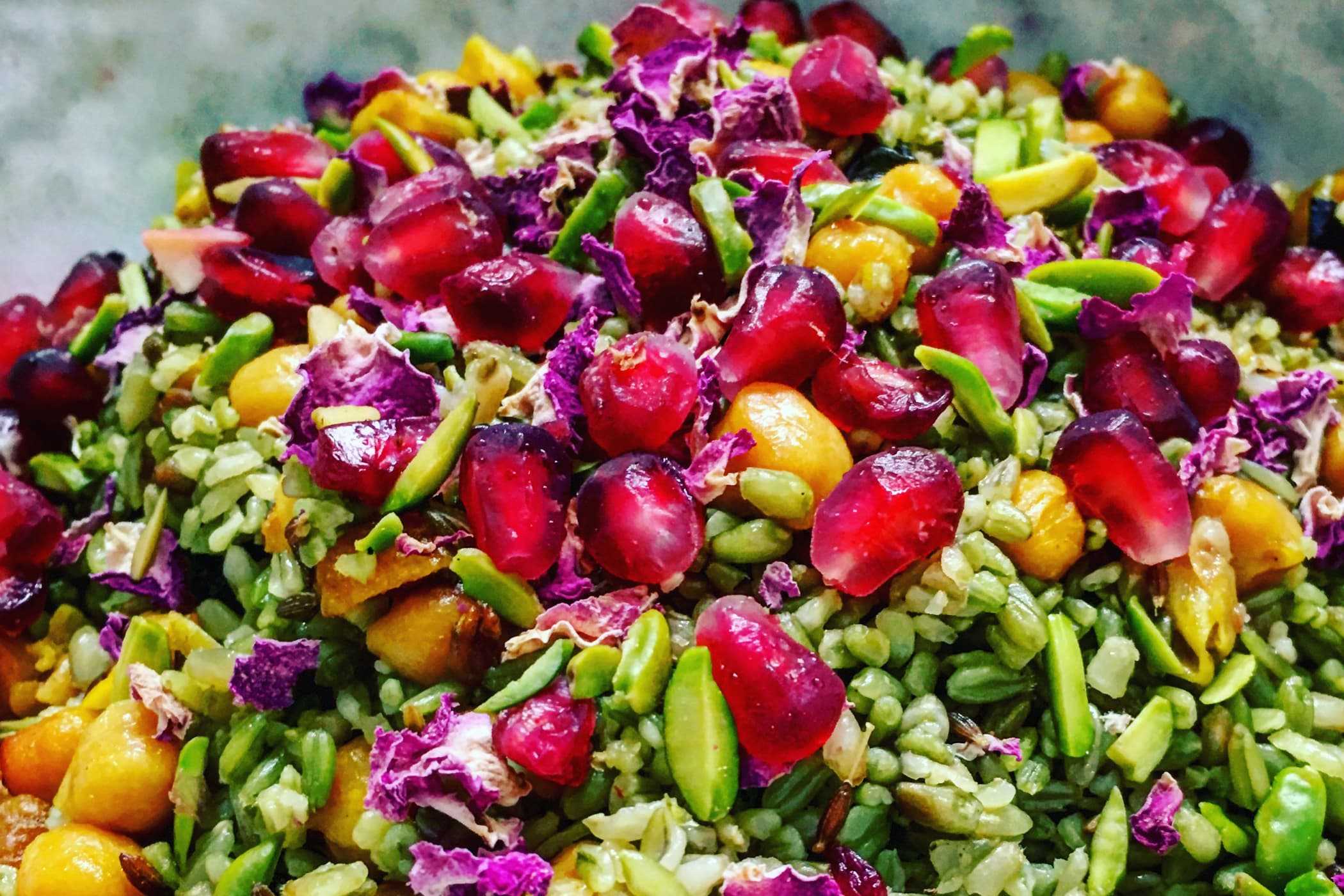
A Time of Need
“When Trump was talking about the Muslim ban, David Chang tweeted about wanting to learn more about Middle Eastern cuisine as a response. It’s interesting how it’s entering into more people’s consciousness now more than ever. [Recent developments in the crisis] shine a spotlight on the urgency of the situation, and there are a lot of people in need, and every little bit counts; it can be people opening up their homes, it could be people trying to support refugees. A lot of these people are educated people who used to run successful business and no longer have any sort of livelihood that they recognize from their previous life. They’ve gone through a lot of hardship. Hopefully though this [campaign], people will be more understanding, and embrace it and help change the situation. Hopefully it inspires people to do this in their own way.”
Sit Back and Watch the Tweets Roll In
“If you go to #CookforSyria on Instagram or Twitter you’ll see over 3,000 posts [Editor’s note: that number is now over 5,000] of people buying the book, or hosting their own supper club, or learning about Syrian cuisine, or making their own flatbread or their own za’atar spice, or incorporating Syrian cuisine into their repertoire. They’re talking about it and not being afraid to talk about it, and also learning about it and volunteering. I’ve met so many people who’ve said, ‘What can I do in New Zealand, what can I do in Berlin, what can I do in Hong Kong?’ I’m getting messages every day from lots of people all around the world who are saying ‘We’d like to host our own supper club,’ or ‘We’d like to throw an event.”
Chef Nuno’s ‘Syrian’ Steak Tartare
“In some instances we ask the restaurant to replace their most popular dish. For example in London, Chiltern Firehouse is a really popular restaurant; it’s booked out every night. There’s always a waiting list, and their most popular dish is the steak tartare, and they completely reinvented it with a #CookForSyria version. The chef, Nuno Mendes, cooked it at the launch site and he loved it so much that he put it onto the menu at his restaurant and kept it on there for the whole month. Instead of having toasted sourdough, he had a flatbread; instead of having capers he put pistachios; instead of putting onions he put preserved lemons; instead of his spicy sauce he put an Aleppo pepper sauce; every element was sort of transformed, and so it was recognizable as a Chiltern Firehouse dish, but the flavor profile was surprising, and I think it allowed people to understand the story behind it and get behind the whole campaign in a different way. Our ideal scenario would be for other chefs to do the same thing.”
Food is a Common Language
“Food definitely has the power to unite people and bring people together. It’s almost like a common language. Even if you don’t speak the same language, everyone needs to eat, and when you eat the food gives you physical nourishment but it can also nourish the soul in terms of people who are eating something that invokes memories of their past. It’s almost like an ode to Syria in this particular cause. It makes it more personal, it makes the heart comes through. It gives people something to talk about; it’s something that people can share through recipes, through photos, through videos. It’s something everyone can recreate as an experience.”

4 Easy Ways to Get Involved
1. Host your own supper club:
“The website has tips on how to host your own supper club, where the money goes. We tried to make it as easy for people to have the conversation as possible, especially by using the hashtag. It’s a nice way of being able to see what people are up to in terms of supporting the cause.”
2. Attend #CookForSyria x London Food Month:
For one week starting on June 25th 2017, Imad and several guest chefs from London’s top restaurants will be cooking at 180 The Strand (hosted by The Store Kitchen). Tickets to a dinner can be found here; tickets for brunch can be found here.
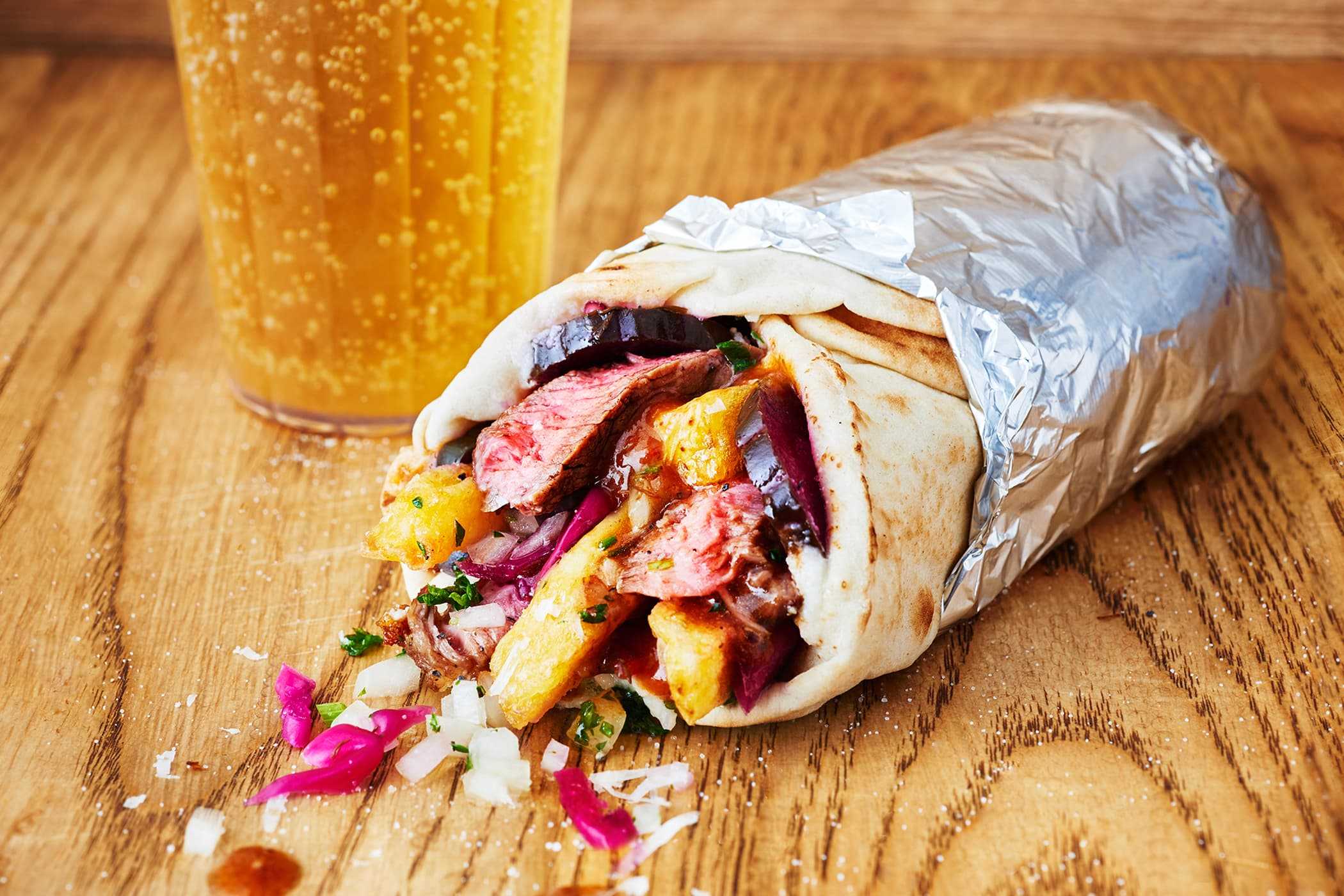
3. Buy the #CookForSyria recipe book:
Completely composed by volunteers, from the chefs who donated recipes to the food photographers and designers to the printing press, 100% of profits from cookbook sales will go to UNICEF.
4. Host a charity bake sale: Want to make your own baklava? Now you can do it for a good cause. Have a bake sale in your office and donate proceeds here.
Find delicious Syrian-inspired recipes and more info on CookForSyria.com, and stay up to date with the campaign by following @CookForSyria on Twitter and Instagram.
Plan your trip to London with Fodor’s guide.
Visit to London
London’s 15 Best Pubs
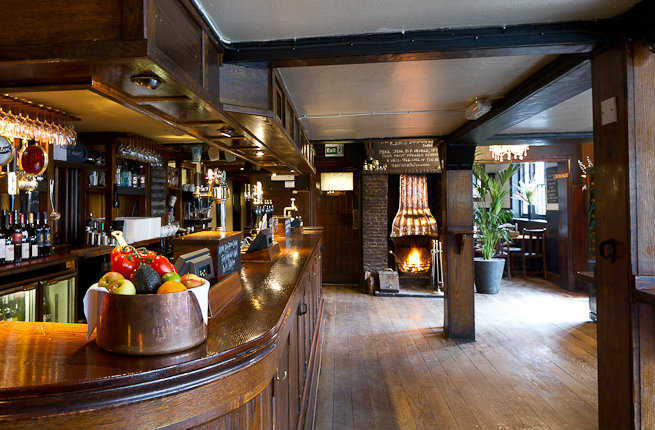
Depending on how you define London’s boundaries, there are believed to be as many as 7,000 pubs in the sprawling metropolis. That’s a whole lot of places to get a proper pint, so we’ve selected 15 of our favorite spots. With so many pubs to choose from, we couldn’t include every gem on our list, so we’ve focused on standouts with a timeless atmosphere rather than trendy gastropubs and craft-beer bars. From Hampstead to Wimbledon, here are the 15 best pubs in London.
by Abbey Chase

Ye Olde Cheshire Cheese
Blackfriars
You can’t turn around in London without bumping into a centuries-old pub, but Ye Olde Cheshire Cheese has a certain well-worn patina that not many can match. A pub has stood on the spot since 1538 (though it required substantial rebuilding after the Great Fire of London in 1666) and the vaulted cellars below date back to the 13th century. Ye Olde Cheshire Cheese has become a city landmark, but hasn’t lost any of its charm. There’s a list of every English monarch who has ruled since 1667 beside the door (Charles II was on the throne at the time) and a host of illustrious writers is said to have frequented this London institution at one point or another. Keep in mind that there is more than one pub with the “Cheshire Cheese” moniker, so be sure to visit the original at 145 Fleet Street.
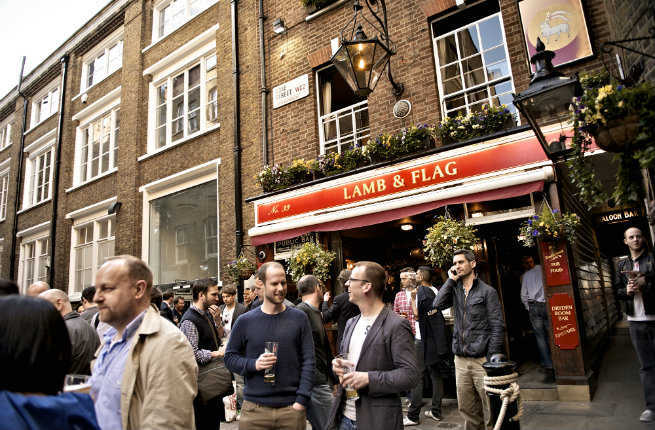
Lamb & Flag
Covent Garden
Tucked in a back alley, Lamb & Flag is the kind of place you’ll find only if you’re already looking for it. Despite its proximity to the crowded, though still charming, Covent Garden, this pub is refreshingly kitsch-free and has stood on the same site since 1772, and counted Charles Dickens as one of its regulars. You’ll likely have to politely shove your way to the bar, but the centuries-old wall hangings, worn wooden bar, and authentic charm make Lamb & Flag well worth a visit.

The Spaniards Inn
Hampstead
If you’re staying in central London, the trek to this Hampstead pub can feel like quite a journey, but it doesn’t get much more atmospheric than this. Originally built as a tollbooth at the entrance to the Bishop of London’s estate, The Spaniards Inn is awash in dark oak paneling, lit by a seemingly dangerous open fire in one corner. The pub also has a long literary history; the wooden bench outside proudly declares “Keats enjoyed many an Ale here,” and Spaniards is mentioned in both Dracula and The Pickwick Papers. In the winter, you’ll find a steaming cauldron of mulled wine behind the bar and during the warmer months, enjoy the exceptional cheese board in the garden.
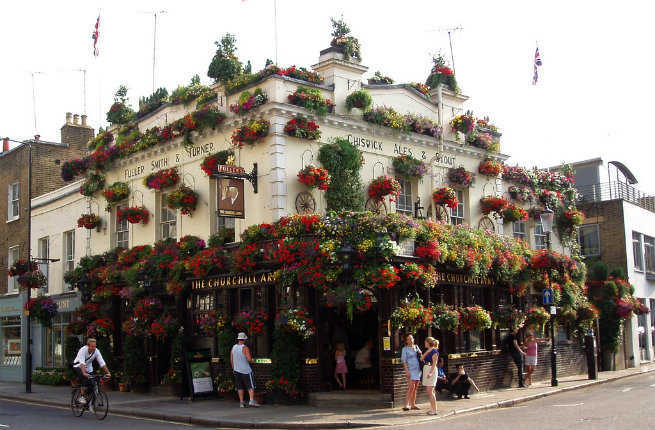
The Churchill Arms
Notting Hill
Of all the pubs in London, The Churchill Arms may have the most distinctive look. Coming down Kensington Church Street, you’ll be able to spot this Notting Hill institution from several blocks away with its floral-covered façade and regal, tiered structure. Once inside, be careful not to knock over any of the hundreds of knickknacks (and a striking amount of Winston Churchill memorabilia) hanging from the walls and ceiling. Ironically, the pub named after the great British leader is in fact an Irish establishment and to add more confusion to the mix, The Churchill Arms houses an unusually good Thai restaurant in the back.
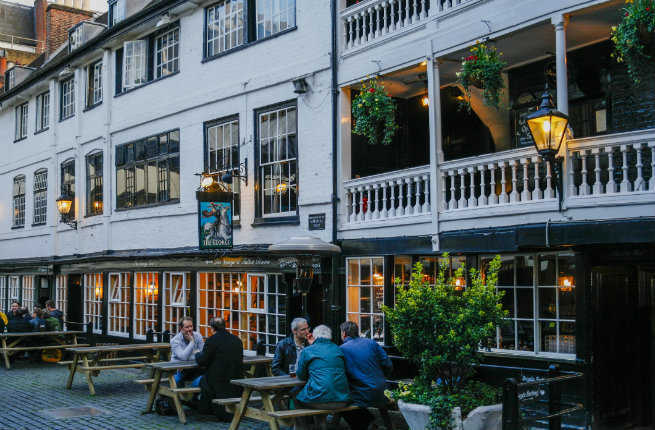
The George Inn
Southwark
A map of London from circa 1543 indicates that the “Gorge” stood on the spot where The George Inn stands today, and though the pub was rebuilt after the London fire, it traces its roots back to medieval times. Now owned by the National Trust, The George Inn continues to serve beer and traditional English fare to Londoners as it has done for hundreds of years in its Southbank location, not three blocks from The Shard, the city’s newest landmark. The final remaining galleried coaching inn in the London, the pub boasts two spacious interior rooms in addition to the Oktoberfest-style lines of picnic tables in the courtyard.
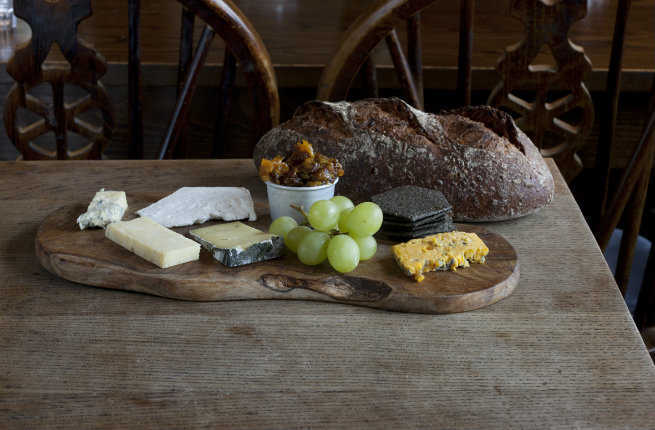
The Mayflower
Rotherhithe
Another of London’s oldest pubs, The Mayflower dates back to 1620 and, not coincidentally, was the site from which the ship of the same name set sail for New England in July of that year (the pub was renamed when it was substantially remodeled in the 1700s). The upstairs room offers a more upscale dining experience, and the downstairs bar and deck overlooking the river make for the perfect drinking environs. If you’re looking for the cheapest pint in the city, you won’t find it here, but the unique atmosphere and great location along the Thames make the price worth it.
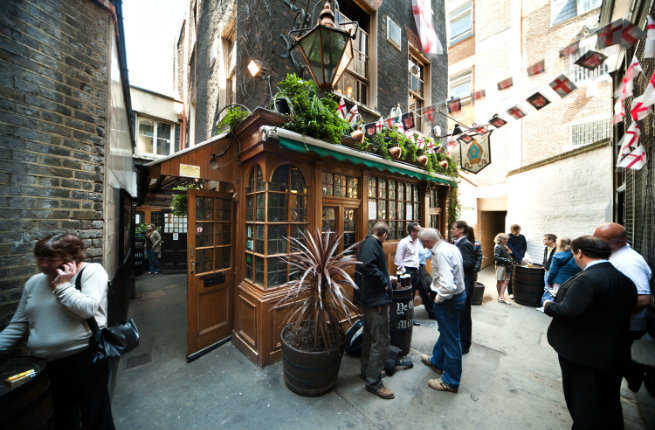
Ye Olde Mitre
Farringdon
Even when sober, finding Ye Olde Mitre can be a bit of a challenge, hidden down a narrow passageway on Ely Court off Holborn. The tavern is wedged between St. Etheldreda’s Church (one of the oldest Catholic churches in England) and Hatton Garden, and has become famous for the cherry tree that stands out front, which Queen Elizabeth I is said to have danced around. Spilling outside the pub’s doors is almost preferable here, as Ye Olde Mitre has the quiet alleyway to itself and has strung mini English flags overhead. Beer steins and pitchers hung on the ceiling give the place a quaint, cluttered feel, and bargoers hoping to find some original fare will be pleased with the tapas-inspired menu.
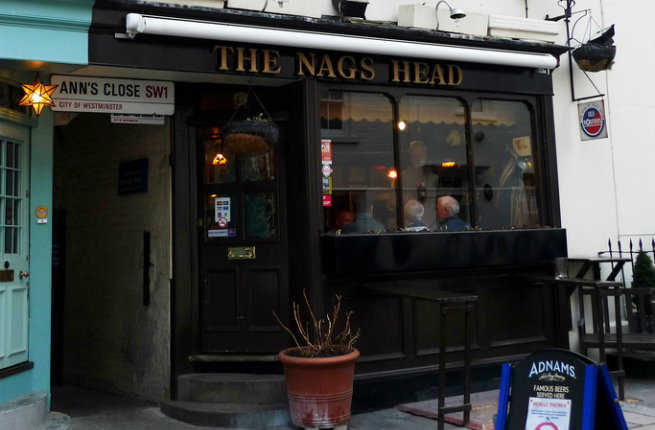
The Nags Head
Belgravia
There are pubs with authentic, old-school charm and then there’s The Nags Head (53 Kinnerton Street). The no-cellphones policy is strictly enforced, you’ll be firmly asked to hang up your coat upon entering, and you won’t find a TV on the premise, though penny arcade games are dotted around the room. Kevin Moran is practically a caricature of a traditional pub owner and the locals who frequent The Nags Head are equally eccentric. The prices are a bit steep, but you’ll be paying for the atmosphere more than the beer.
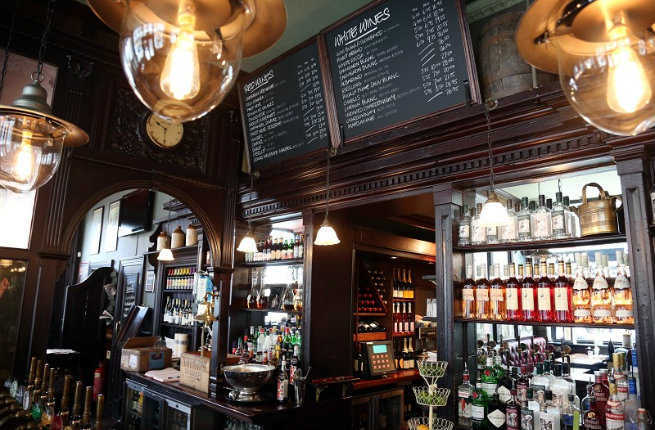
The Flask
Hampstead
The Flask can be something of a mind-bender, no matter how much or how little you’ve had to drink; with two separate entrances and two bars that have no interior connection, finding your way around this historic space can be a bit of a challenge. Originally built with a separate public bar and saloon bar (the former the more modest option), The Flask has maintained its original charm with the addition of a more modern dining room in the back. A perfect blending of the old with the new makes this Hampstead spot (with a surprisingly long wine list) an inviting spot to imbibe, situated along the impossibly quaint Flask Walk a block from the Hampstead Tube station.
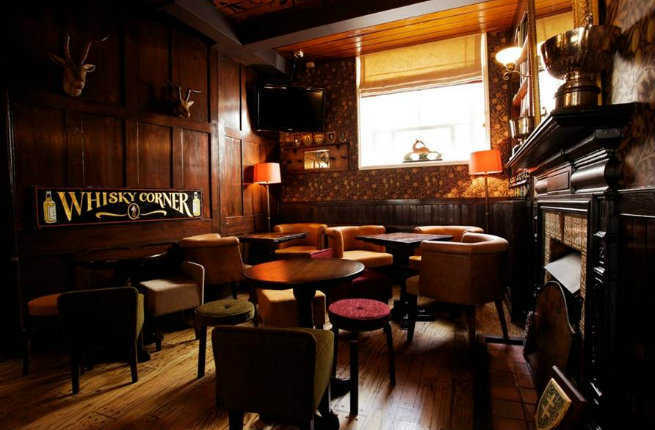
The Antelope
Belgravia
Though found near Sloane Square, one of the most expensive parts of an already pricey city, The Antelope offers up a quintessential English pub atmosphere without emptying your pockets. To boot, the food is exceptional for a pub and the wood-paneled exterior looks particularly inviting on the otherwise quiet, residential street. Looking for something more sophisticated? Head upstairs to the Eaton Room, outfitted with red curtains, stylishly mismatched wooden chairs, and mint-colored paneled walls.
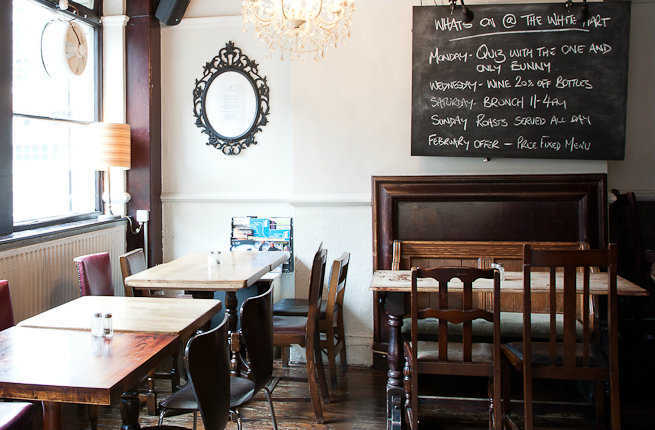
The White Hart
Waterloo
There are a number of pubs in London that bear this name, but when looking for the best neighborhood vibe and a quintessential Sunday roast, head to The White Hart near Waterloo station. Tucked away on a quiet neighborhood street in a refreshingly tourist-free Southbank area, this single-room pub can get crowded with the after-work set, but the endlessly cheery group of locals will more than make up for the lack of seating. The White Hart is tough to beat on a Sunday afternoon; the excellent roast, pile of board games and newspapers, and delicious Bloody Marys make for the ultimate relaxed end to the weekend.
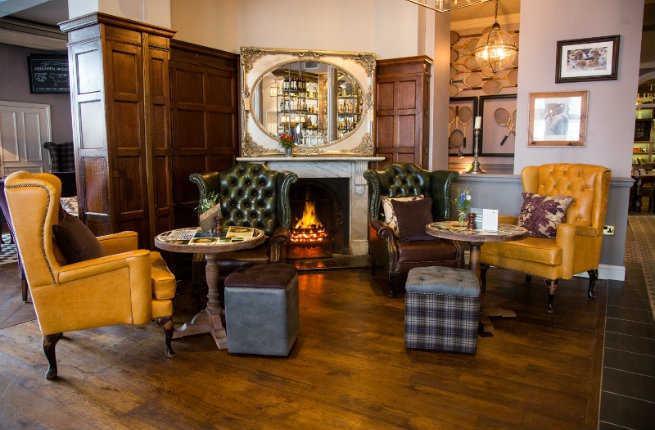
The Dog & Fox
Wimbledon
Just 15 minutes by train from Waterloo station, Wimbledon feels miles from central London with its quiet High Street and wooded Wimbledon Common, where horseback riders, casual golfers, and wellie-clad dog-walkers all lend the park an almost stereotypical English vibe. Fitting of the small-town atmosphere, The Dog & Fox does double-duty as a pub and hotel, not a five-minute walk from the Common. In addition to the usual line-up of Young’s beer, The Dog & Fox also features an extensive cocktail list, best enjoyed on the outdoor patio on a sunny day.
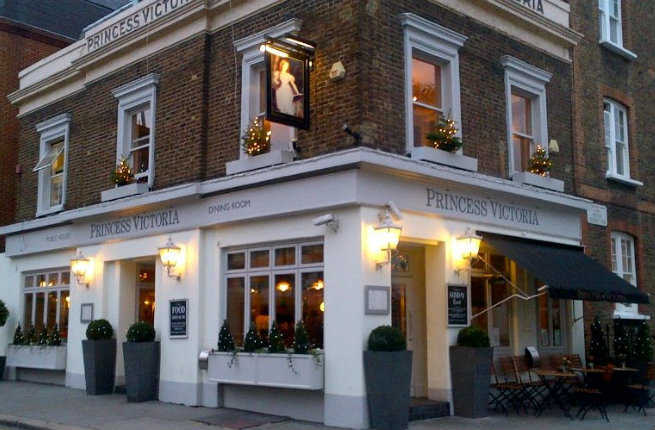
Princess Victoria Kensington
Kensington
While not the most traditional spot on this list, the Princess Victoria Kensington brings a touch of whimsy to the usual pub experience. The neon sign behind the bar lends this pub a slightly dive-y feel, but the small space is still very cozy, without feeling cramped. Head upstairs for a respite from the noisy downstairs bar, and don’t leave without ordering the shockingly good fresh warm bread. Cocktail lovers in particularly will love this spot; the £8 drinks are a ridiculously good deal in London, let alone in the tony Kensington neighborhood.
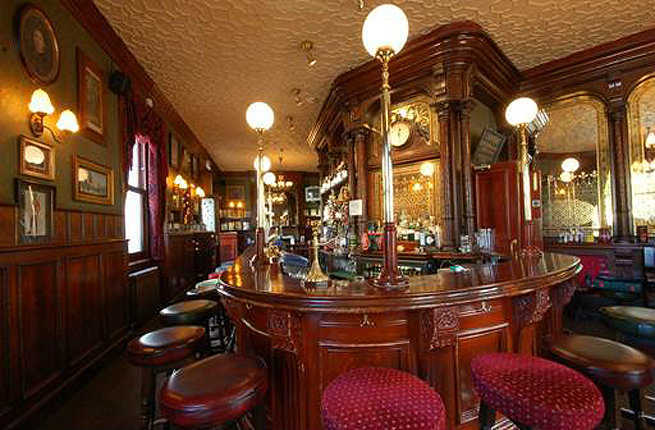
The Victoria
Paddington
This area north of Hyde Park isn’t the busiest corner of the city, which is part of what makes The Victoria so appealing. The menu features standard pub fair, but the food is a cut above what you’ll normally find at the average London drinking hole. The cozy interior is exactly what you’d hope to find in an English pub, with intricate woodwork, antique-y light fixtures, and a fireplace surrounded by well-worn armchairs. Upstairs features a beautiful library, perfect for a more quiet bite.
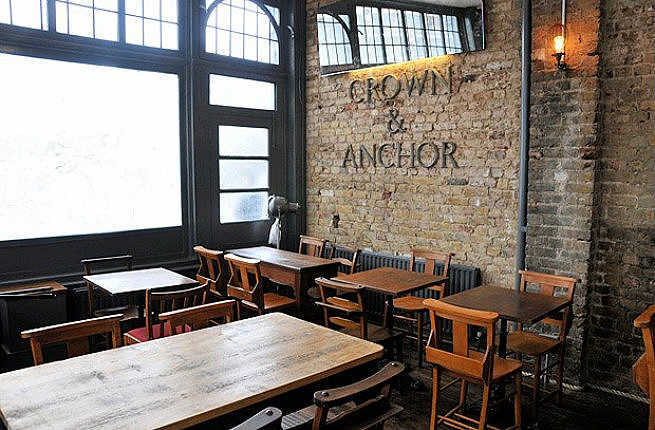
The Crown & Anchor
Brixton
Managing to maintain its traditional English vibe while offering a unique assortment of craft ales, The Crown & Anchor sees tweed suits and ironically clad hipsters come together under one roof. Beer is the star of the show here, but this South London pub doesn’t lack in atmosphere either, with an exposed brick wall along one side and a wall of French windows along the other, with quirky minimalist light fixtures hung between the two.
Visit to London
Hotel Opening: London’s Shangri-La Hotel, at the Shard
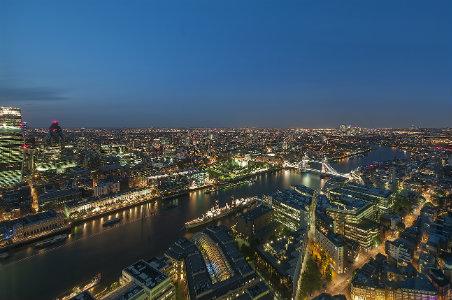
The Shangri-La Hotel, at The Shard, which opened in May, boasts floor-to-ceiling windows, the city’s highest cocktail bar and infinity pool, and unrivalled views of the London skyline from 1,016 feet above the South Bank of the Thames. Occupying floors 34 to 52 of the Renzo Piano-designed skyscraper, the Shangri-La is London’s first high-rise hotel, and the tallest in Western Europe. Its location, just behind City Hall, puts it within walking distance of Borough Market, Shakespeare’s Globe, Southbank Centre, and the Tower of London.
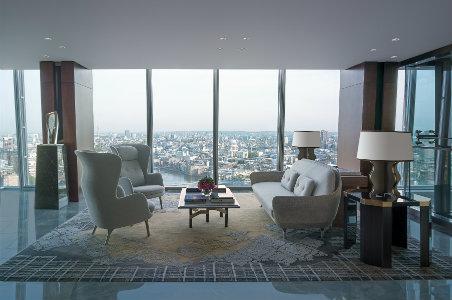
Visitors enter the hotel through a ground-floor lobby on St. Thomas Street, adjacent to the London Bridge tube station, where they’re welcomed by a small seating area and, off to the left, a self-dubbed “artisan deli” called LÁNG. Modelesque women draped in Asian silks check you in, hand you a cold towel, and introduce you to a porter who’ll whisk you and your luggage to your room by way of one of two express elevators that exit on the 35th floor. Here, you’ll change to a key-card-only access elevator up to the guestrooms, where your porter will acquaint you with your room, including automated climate control and blinds, a plush kimono, and a pair of binoculars for enjoying the view.
Rates: Guestrooms and suites (180 rooms are currently open, with another 22 opening by 2015) are priced by view. Of the guestrooms, the least expensive, at $799 during high season (Superior Shard Room), affords south-facing views; the most expensive, $1,050 (Iconic City View Room), gives you access to triple-aspect, 180-degree views of London’s key landmarks. Suites start at $2,690.
Rooms: All of the hotel’s guestrooms have custom beds adorned with Frette linens, free WiFi, flat-screen TVss, a Nespresso machine, and a complimentary pot of Chinese welcome tea. The marble bathrooms, replete with Acqua Di Parma toiletries, have heated floors, a TV in the mirror, and Toto Washlet toilets. With neutral-colored furniture, unremarkable wall art, and space-age swirly carpets, the décor is typical for the Hong Kong-based Shangri-La group; understated, almost bland. However, it only takes a single, outward glance to understand why: Every guestroom in the hotel has jaw-dropping views of London and beyond.
In an Iconic City View Room—definitely the one to book—this humbling panorama stretches from Buckingham Palace in the west to Greenwich’s Royal Observatory in the east, and everything in between, including the full trace of the Thames, St. Paul’s Cathedral, the Houses of Parliament, and bridges too numerous to count. To stay in a room with a view like this is a one-of-a-kind experience in London. (The Shard’s viewing deck doesn’t even come close.)

Drinks & Dining: LÁNG, on the ground floor, serves pastries, salads, and sandwiches, while TĪNG on the 35th floor offers a Modern British-meets-Asian menu featuring seasonal ingredients from nearby Borough Market. TĪNG’s lounge serves London’s highest afternoon tea; choose between classic English or Asian-inspired preparations. The 52nd-floor Champagne and cocktail bar, GŎNG, is the perfect spot for sundowners or late-night drinks from the creative craft cocktail list.
Health & Fitness: There is a 24-hour fitness center on level 52 as well as an infinity swimming pool with special children’s swimming hours. Spa treatments can be arranged in your room or in one of the spa residences.
Pros: Matchless views; superb service; exceptional restaurants and cocktail bar; nifty, high-tech bells and whistles in guestrooms.
Cons: A “currently being worked on” design flaw caused by glass wings that protrude from the corners of the building allows guests, with a turn of the head, to see into their neighbor’s room at night; décor may feel cold to some; restaurant, cocktail bar (and therefore elevators) often swell with hotel guests and non-hotel guests alike due to the popularity of the view.
Visit to London
15 Must-See Literary Sights in London
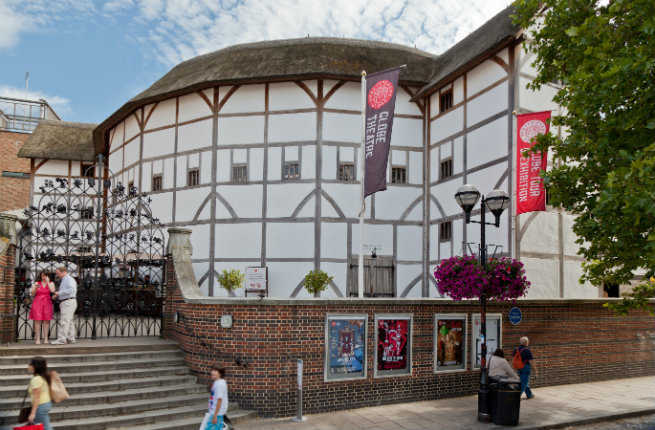
Few countries can lay claim to as many great writers as England, home to some of history’s most renowned scribes. Strolling around the capital, be sure to look for the blue plaques marking where people of importance, both literary and otherwise, have lived and worked throughout history, but for a more dedicated look at the city’s literary history, read on. From pubs to museums to libraries, here are 15 can’t-miss spots for literature lovers touring London.
by Abbey Chase
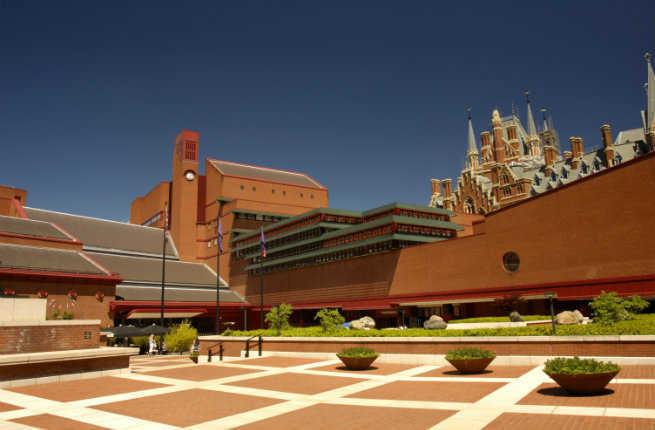
The British Library
What better place to begin a literary tour of London than at a library? Originally part of the British Museum, the Library moved to its current location on Euston Road in 1998, transferring its collection to the 1.2-million-square-foot space. With more than 150 million items in its collection, including manuscripts that date back 4,000 years, the British Library is the second largest library in the world, behind the Library of Congress. Literature fans should make a beeline for the Sir John Ritblat Gallery, just to the right of the main entrance, to view the Library’s stunning archival collection, which includes the Magna Carta, a Gutenberg Bible, original copies of Beowulf, The Canterbury Tales, Jane Eyre, and Shakespeare’s First Folio, and select works from Jane Austen to the Beatles.

The George Inn
This Southwark pub dates back some 400 years, though it was virtually destroyed in the Great Fire of London in 1666, and stands as the last remaining galleried coaching in in London. Charles Dickens was a frequent visitor of The George Inn, and he even mentioned it in Little Dorrit (in chapter XXII). Shakespeare is also rumored to have frequented this pub, though this is largely speculation due to its proximity to the Globe. The George is now owned by the National Trust to maintain the pub’s nostalgia-inducing, literary-steeped atmosphere.
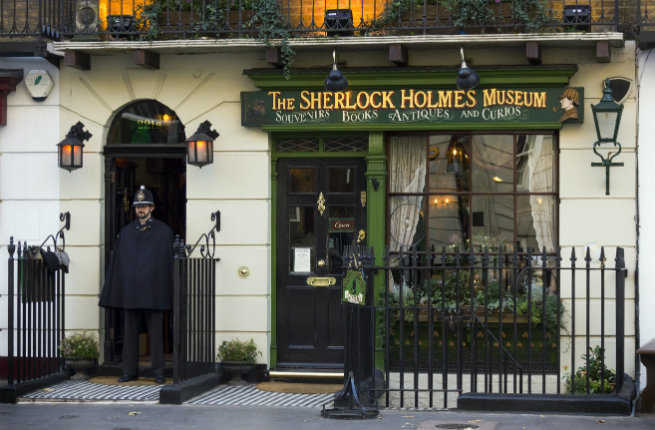
The Sherlock Holmes Museum
Though technically located between 237 and 241 Baker Street, The Sherlock Holmes Museum proudly declares its address as 221b Baker Street in honor of Sir Arthur Conan Doyle’s famous detective. This homage to one of literature’s most famous sleuths can be found just off the southwest corner of Regent’s Park, and fans of all things Holmes will enjoy the small museum filled with period exhibits, Holmes memorabilia, and a mock-up of the detective’s study looking onto the street. Even if you decide to opt out of the museum tour ($16), this spot is still worth a visit for the outstanding gift shop, in-character staff, and Baker Street tube station, covered in Holmes’ silhouettes.

Shakespeare’s Globe
In a city full of landmarks, the Globe Theatre is one of London’s most iconic spots. While the modern reconstruction is not even 20 years old, the recreation of the 1599 theatre has been painstakingly modeled after the original space that Lord Chamberlain’s Men called home. The original Globe caught fire in 1613 during a performance of Henry VIII and was rebuilt the following year, before the Puritans shuttered it in 1642. For a true Shakespearean experience today, view a performance from the pit, the standing-room space directly in front of the stage; this season, the Globe is staging Antony and Cleopatra, Julius Caesar, King Lear, and The Comedy of Errors, as well as other non-Shakespeare productions. Alternatively, take a tour of the theatre.
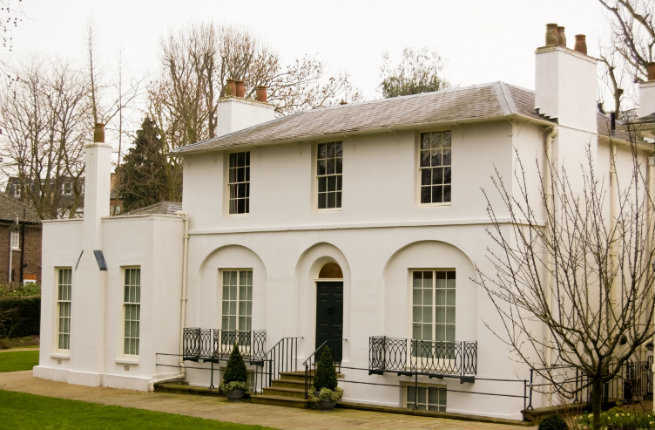
Keats House
John Keats lived in this house on the edge of Hampstead Heath with his friend Charles Brown for almost two years, where he is said to have written “Ode to a Nightingale.” Keats moved to Italy in 1820 as his tuberculosis deteriorated, leaving his fiancée Fanny Brawne in England, and the house was inhabited by various London celebrities throughout the rest of the 19th century. Today, the Keats Museum is housed in the adjacent coach house and showcases a collection of Keats’ letters, the engagement ring Keats gave Brawne, and a copy of the poet’s death mask. The house also hosts a variety of literary events, as well as guided walks around the neighborhood.
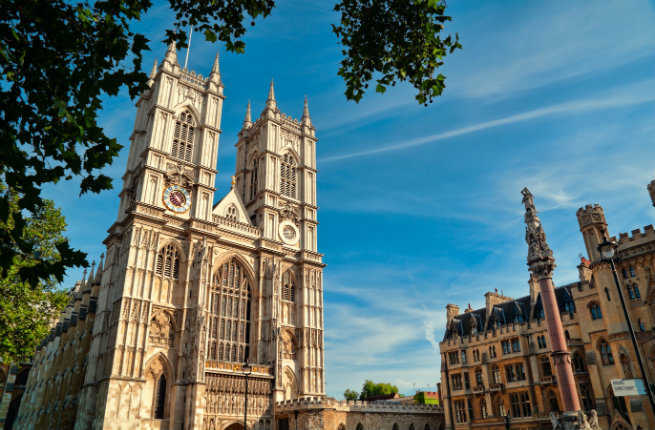
Poets’ Corner, Westminster Abbey
The list of famous people interred in Westminster Abbey is lengthy, to put it mildly, and Poets’ Corner in the South Transept serves as a kind of literary hall of fame. Geoffrey Chaucer’s tomb was placed here in 1556 as a kind of happy accident (he was recognized for his service as Clerk of Works, not as an author) that created Poets’ Corner, which has since served as a memorial to Britain’s greatest cultural contributors. Henry Francis Clay, Charles Dickens, Thomas Hardy, Rudyard Kipling, Laurence Olivier, Edmund Spenser, and Alfred Tennyson are all interred here, and there are also several monuments commemorating famous writers whose remains are elsewhere, most notably Shakespeare, who is buried in Stratford-upon-Avon.
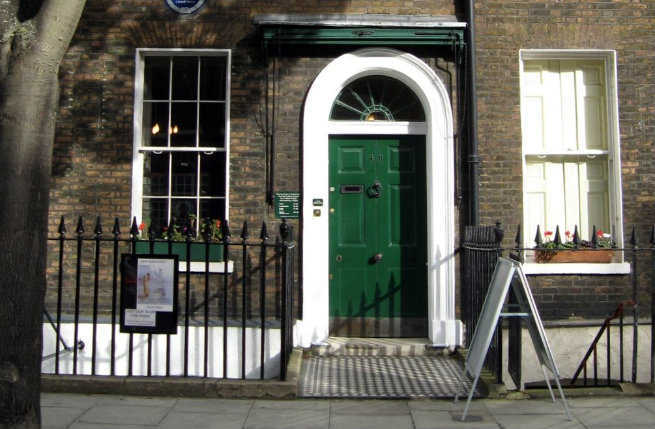
Charles Dickens Museum
Like Keats and his Hampstead residence, Dickens only lived in this house on Doughty Street for two years, but as the site where he penned Oliver Twist and Nicholas Nickelby, this spot in Holborn is worth visiting. When plans to demolish the house were drawn up in 1923, the Dickens Fellowship took over the site and turned it into a museum showcasing a collection of Dickens’ memorabilia, including paintings, manuscripts, furniture, and other items that belonged to the author. You can tour the museum at your own pace or sign up for one of the Costumed Tours on the third Saturday of every month, in which a period-clad Dickens’ housemaid gives you a tour of the residence.
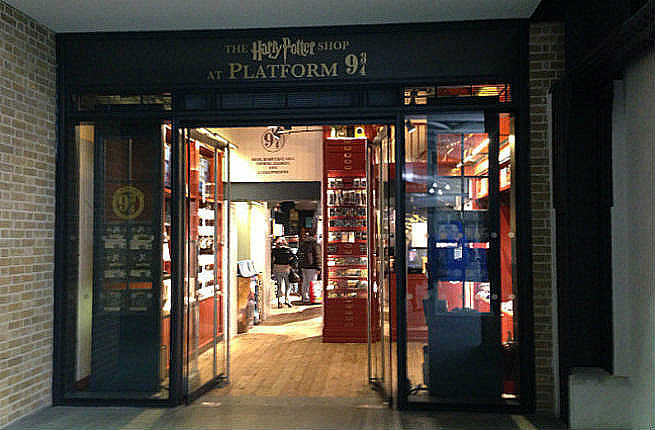
Platform 9 ¾, King’s Cross Station
For something with a little more whimsy, take the Tube to the bustling King’s Cross Station and look for the famous platform to board the Hogwarts Express. Follow signs for platform 9 and you’ll see the trolley disappearing into the wall off to the side (there is a roped queue and an attendant there almost all the time, so it will be hard to miss). After you take a picture with a Hogwarts scarf of your choice, head to the gift shop around the corner to stock up on Harry Potter souvenirs and trinkets.
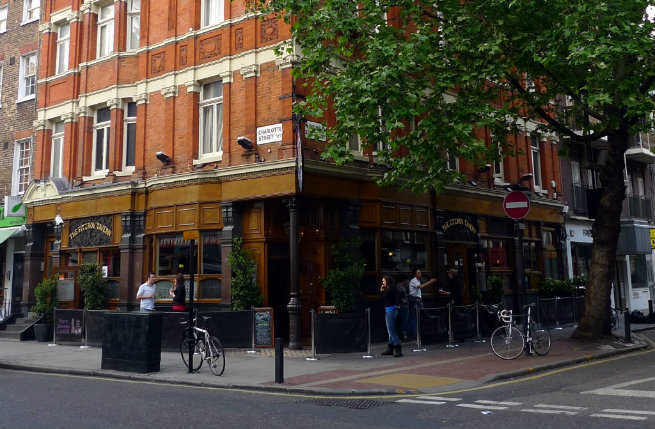
Fitzroy Tavern
A pub so famous it gave the London neighborhood its name (Fitzrovia), the Fitzroy Tavern (16 Charlotte Street) was once a favorite hangout of George Orwell, George Bernard Shaw, and Richard Attenborough. Legend has it that Welsh poet Dylan Thomas used to give out poetry written on beer mats to any woman who asked while drinking here. Pictures on the walls honor past regulars at the Fitzroy and while the crowd today is less literary than during the mid-20th century, the locals still lend this pub an authentic vibe.
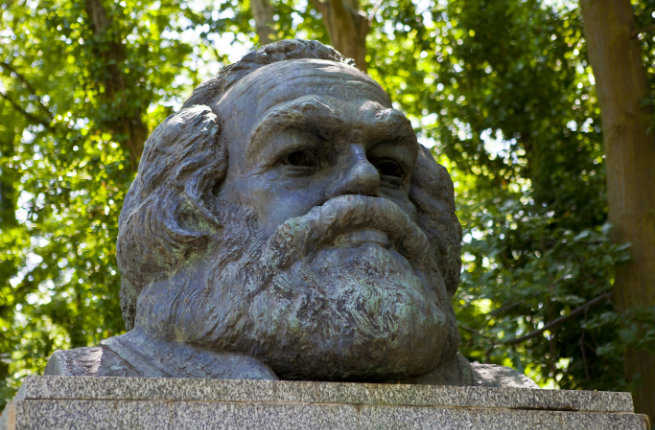
Highgate Cemetery
This 37-acre cemetery in London was created in 1839 as one of the “Magnificent Seven” cemeteries built to alleviate the burden on cemeteries within the city, and Highgate became one of the most sought-after plots in Victorian London. Amidst the lavish catacombs, chapels, and Egyptian-style tombs, you can view the graves of Karl Marx, Henry Gray (author of Gray’s Anatomy), and George Elliot, as well as many of Charles Dickens’ family members and several prominent English actors. The cemetery has been referenced in several modern films, TV shows, and novels, and gained prominence in the 1970s due to rumored supernatural activity on the premises. Note that access to the West Cemetery is only allowed on an accompanied tour.
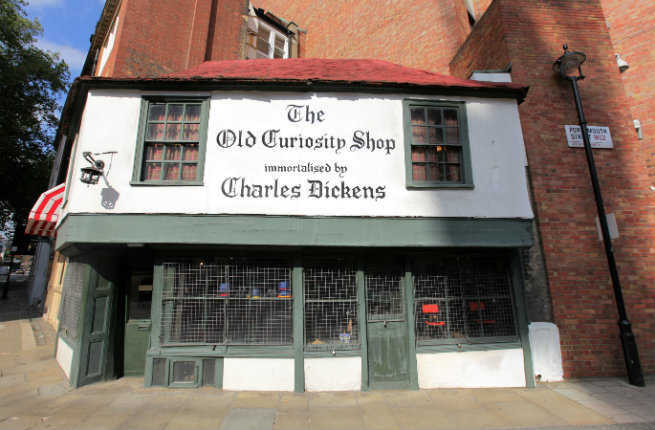
The Old Curiosity Shop
Built from the recycled wood of old ships, The Old Curiosity Shop (13-14 Portsmouth Street) is one of a select group of places in London that can say it survived both the Great Fire of 1666 and aerial bombing during World War II. The 16th-century shop can still be found near the London School of Economics and while the relationship between this particular store and Dickens’ The Old Curiosity Shop is unclear, the London landmark is considered by many to be the inspiration for the novel with its tilting ceilings, wobbly floorboards, and creaking staircase. Dickens lived in the Bloomsbury area near this shop and is said to have visited on multiple occasions. Stop in for a bit of history or to pick up a pair of shoes.

Ye Olde Cheshire Cheese
With a list long list of illustrious literary regulars, Ye Olde Cheshire Cheese (145 Fleet Street) is a must-see for any literature fan passing through the city. Dr. Samuel Johnson moved next door to the pub in 1748 (though there is, in fact, no evidence of him ever visiting), but Mark Twain, Alfred Tennyson, Sir Arthur Conan Doyle, William Makepeace Thackerary, G.K. Chesterton, W.B. Yeats, Voltaire, James Boswell, and Ben Jonson are all said to have passed through at one point, if not attended regularly; Dickens’ even alluded to it in A Tale of Two Cities. This rickety Fleet Street pub is still a great place to grab a pint and relax in the historic atmosphere.
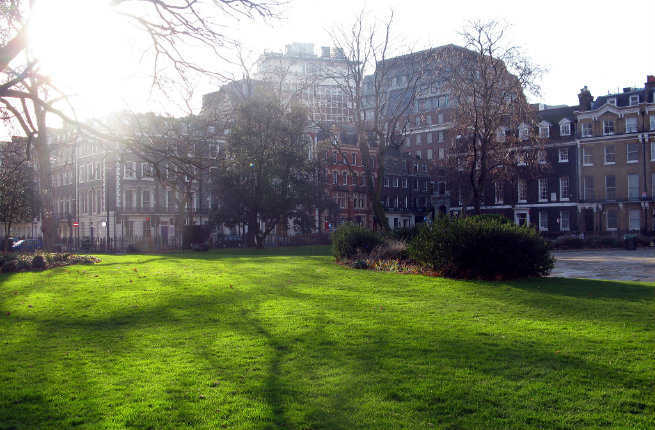
Bloomsbury
A neighborhood steeped in literary history, Bloomsbury is an easy place to while away an afternoon exploring its quiet streets. The Bloomsbury Square garden was a meeting place for writers during the 1920s and ’30s known as the Bloomsbury Group, a highly influential group of writers that counted Virginia Woolf, John Maynard Keynes, and E.M. Forster as members. The British Museum, the former home of the British Library, is nearby, and W.B. Yeats, Charles Dickens, T.S. Eliot, and Bram Stoker all lived in the area at one point. Keep an eye out for the blue plaques marking important historical spots as you stroll around the neighborhood, or take a guided literary walking tour of Bloomsbury.
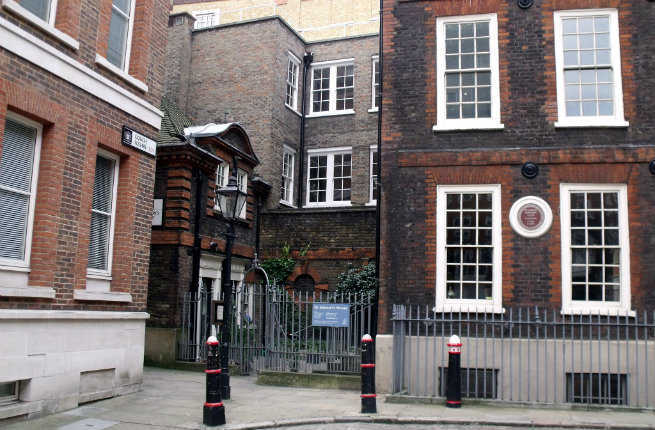
Dr. Johnson’s House
Samuel Johnson is perhaps most famous for his publication of A Dictionary of the English Language in 1755, a watershed moment in the history of the English language, and fans of the famous lexicographer and writer can visit his house not 500 feet from Ye Olde Cheshire Cheese. Johnson lived at this house on 17 Gough Square for 11 years, during which time he compiled his Dictionary, and today visitors can view first printings of Johnson’s work and his personal pink tea set. Famous for his sociable disposition, Johnson was known for being a great host and many famous writers passed through here; some of their memorabilia is on display in the house today.
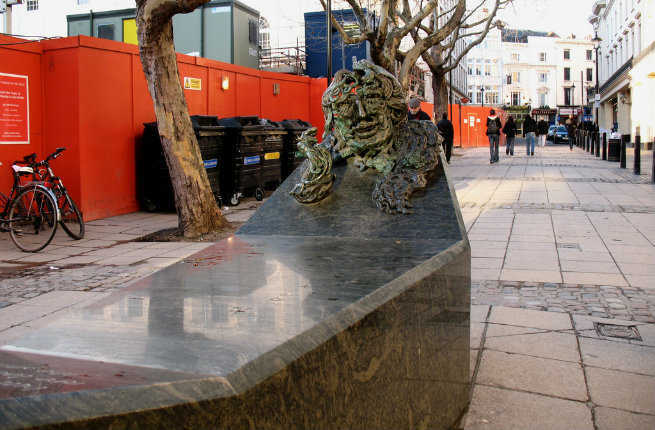
‘A Conversation With Oscar Wilde’
The Irish poet and playwright moved to England in 1878 and took up residence at 44 Tite Street Chelsea in 1881. Though he died in Paris, Wilde spent much of his life in the English capital and wrote many of his famous works while living there. Fans of Wilde should seek out A Conversation With Oscar Wilde, a sculpture on Adelaide Street northeast of Trafalgar Square. The somewhat abstract sculpture, unveiled in 1998, shows a whimsical Wilde with a quote from Lady Windermere’s Fan inscribed beneath: “We are all in the gutter, but some of us are looking at the stars.”
-
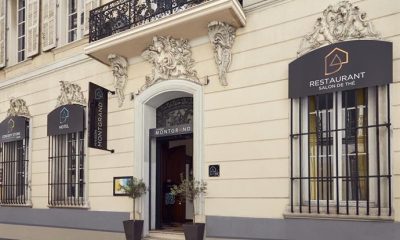
 France6 years ago
France6 years agoHotel Maison Montgrand – Vieux Port
-
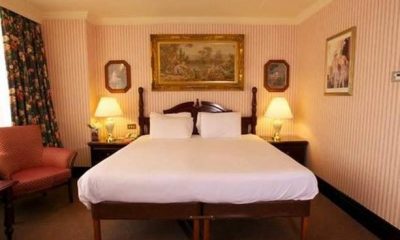
 United Kingdom6 years ago
United Kingdom6 years agoBritannia International Hotel Canary Wharf
-
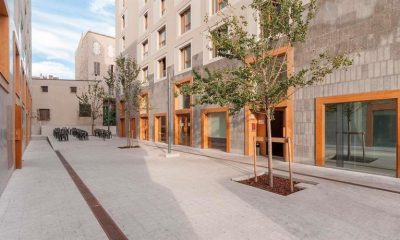
 France6 years ago
France6 years agoAppart’City Marseille Euromed
-
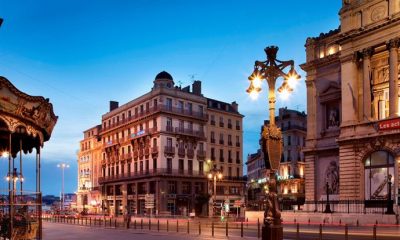
 France6 years ago
France6 years agoEscale Oceania Marseille Vieux Port
-
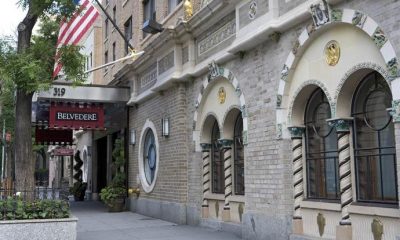
 USA6 years ago
USA6 years agoThe Belvedere
-
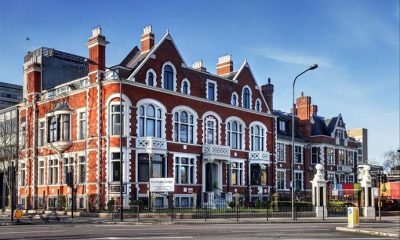
 United Kingdom6 years ago
United Kingdom6 years agoBest Western London Peckham Hotel
-
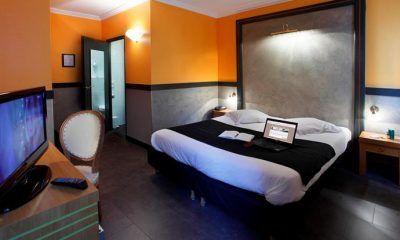
 France6 years ago
France6 years agoAdonis Marseille Vieux Port
-
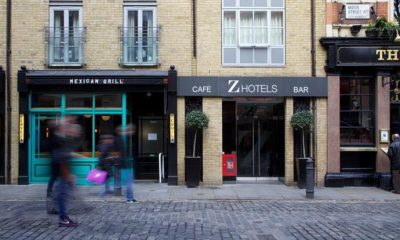
 United Kingdom6 years ago
United Kingdom6 years agoThe Z Hotel Soho

